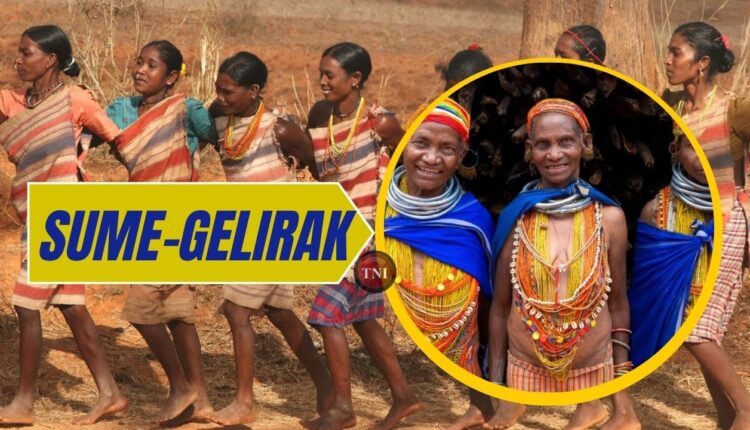Sume-Gelirak: How Odisha’s Bonda Tribe Celebrates Their Culture
The Bonda tribe, renowned for their unique way of life and rich cultural legacy, celebrates this ten-day festival, which pulsates with a compelling combination of dance, music, rituals, and fun.
The Sume Gelirak is a distinctive and vibrant tribal celebration that takes place deep within the lush hills of Koraput district, Odisha. The Bonda tribe, renowned for their unique way of life and rich cultural legacy, celebrates this ten-day festival, which pulsates with a compelling combination of dance, music, rituals, and fun. Let’s take a trip to learn more about Sume Gelirak and become fully immersed in this fascinating tribal festival.
The precise origin of Sume Gelirak, which has been passed through orally down the centuries, is still unknown. Nonetheless, the celebration is said to have strong roots in Bonda mythology. It serves as a thanksgiving to their deities and spirits for a bountiful harvest, a plea for continued blessings, and a celebration of life’s simple joys. Additionally, the festival provides a platform for young Bondas to showcase their skills, forge social bonds, and potentially find their life partners.
Over the course of ten days, Sume Gelirak is distinguished by particular customs and festivities. Here is an overview of the festival’s main phases:
Day 1–3: In order to obtain the blessings of the Bonda deities for a prosperous festival, the celebrations begin with prayers and sacrifices. The tribe’s priest, known as the “Sisa,” is essential in carrying out rites and getting the populace ready for the happy days to come.
Days 4-6: There is a spike in activity at this time as lively festivities take front stage. In addition to displaying their talents and dressing in vibrant clothing and traditional decorations, young men and women participate in exuberant dance performances. These dances also serve as a platform for courtship, with potential couples expressing their interest through gestures and glances.
Day 7: A distinctive custom called “Daha Nacha,” or stick combat, takes place. Young Bonda boys show strength and bravery by fighting with flexible sticks in a controlled manner. It is thought that this act will give children courage and equip them to face obstacles in the future. It’s crucial to remember that elders keep an eye on the fight to ensure safety and tradition.
Support Independent Journalism? Keep us live.
Day 8–9: The ‘Sisa’ delivers sermons, educating the community about love, friendship, and living in harmony with nature. Storytelling sessions and traditional music performances fill the evenings, creating a warm and nostalgic atmosphere.
Day 10: In order to thank the gods for a good celebration, the festival ends with a last round of prayers and sacrifices. As the community anticipates the Sume Gelirak the next year, a spirit of solidarity and revitalised optimism permeates the area.
Sume Gelirak provides insight into the captivating culture of the Bonda tribe. Here are some cultural aspects reflected in the festival:
Attire: Cultural attire is very important. Men embellish themselves with beads, head coverings, and feathers, whereas women don vibrant sarees and detailed beaded jewelry.
Music and Dance: Rhythmic beats from traditional drums and vibrant dance performances are central to the festivities, reflecting the Bonda community’s artistic expression and joy of life.
Community Spirit: The festival fosters a strong sense of community, with everyone participating in the preparations, celebrations, and rituals.


Comments are closed.